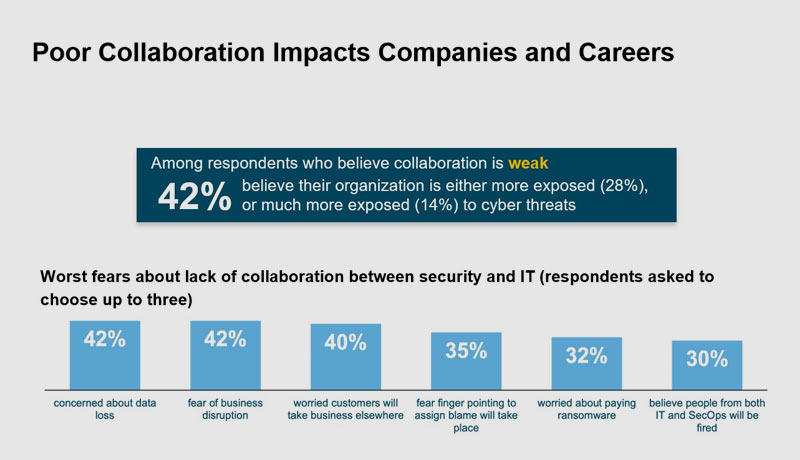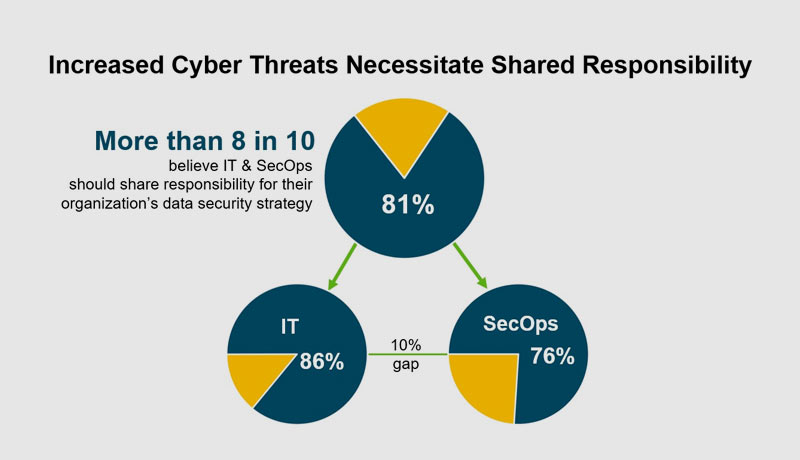
New research commissioned by Cohesity, a provider of next-gen data management, reveals that while most IT and security operations (SecOps) decision-makers believe they should jointly share the responsibility for their organization’s data security strategy, many of these teams are not collaborating as effectively as possible to address growing cyber threats.
According to the survey, nearly half of those who believe collaboration between IT and security is weak believe their organization is more vulnerable to cyber threats as a result — and the implications for businesses could be significant.

The study is based on an April 2022 survey of more than 2,000 IT decision-makers and SecOps professionals (split nearly 50/50 between the two groups) from businesses in the United States, the United Kingdom, and Australia — all of whom play a role in IT or security decision-making.
The survey was conducted as nearly three-quarters (74%) of respondents believe the threat of ransomware has increased in their industry over the last year, with nearly half (47%) reporting that their organization has been the victim of a ransomware attack in the last six months. The survey yielded the following global findings:
“This research pinpoints there is often a lack of collaboration between IT and security teams that we’re seeing across many organizations today,” said Brian Spanswick, chief information security officer, Cohesity. “For too long, many security teams focused primarily on preventing cyber attacks, while IT teams have focused on data protection, including backup and recovery. A complete data security strategy must bring these two worlds together — but in many cases, they remain separate and this lack of collaboration creates significant business risks and can put companies at the mercy of bad actors.”

To emphasize this point, when asked how their organization prioritized data backup and protection as part of their security posture or response to a cyber attack, 54 percent of IT decision-makers said it was a top priority and a critical capability, while only 38 percent of SecOps respondents said the same.
“If SecOps teams are not thinking about backup and recovery, and lack next-gen data management capabilities as part of an overall security strategy, that’s a problem,” said Spanswick. “IT and SecOps teams need to collaborate before an attack takes place — looking holistically across the NIST Cyber Security Framework which includes five core capabilities: identify, protect, detect, respond, and recover. If they wait to collaborate until their data is hijacked, that’s too late and the results could be catastrophic for businesses.”
Eighty-three percent of all respondents (84 percent of IT decision-makers and 81 percent of SecOps respondents) agree that if security and IT worked more closely together, their organization would be better prepared to recover from cyber threats such as ransomware attacks. When asked what would give their organization more confidence that they could quickly recover business systems in the event of a ransomware attack, 44 percent of all respondents (49 percent of IT decision-makers and 39 percent of SecOps respondents) said greater communication and collaboration between IT and security is critical.